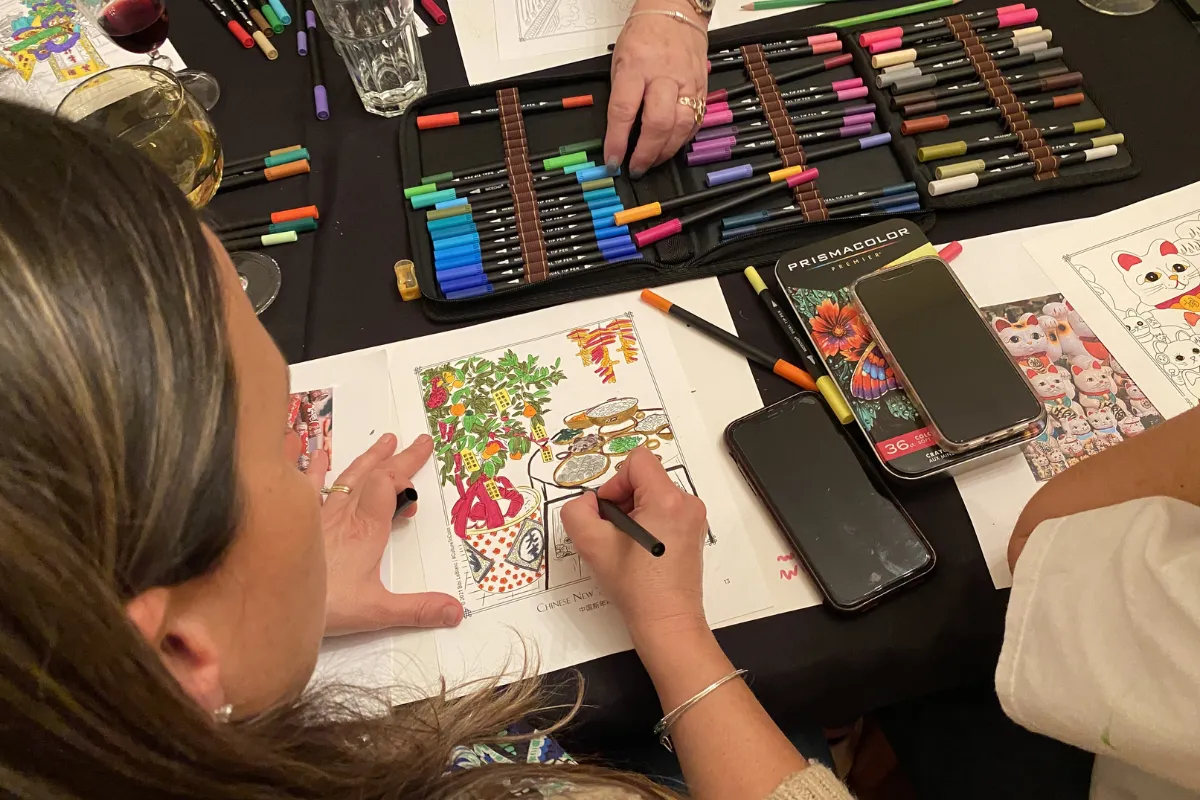
Beyond Art: How Coloring Books Quiet the Mind and Heal the Heart
Coloring for Calm, Clarity, and Connection
There’s something soothing about putting color to paper—no deadlines, no pressure, just the rhythm of your hand and the gentle unfolding of a pattern. Whether it’s a mandala, a floral scene, or a page from your favorite travel coloring book, the act of coloring invites you to slow down, breathe deeper, and reconnect with yourself.
In a world of constant stimulation and endless screen time, coloring offers a rare gift: presence. Each choice—what color to use, which section to fill in—becomes a mindful decision. And without realizing it, your mind begins to let go of the day’s clutter. Your breathing slows. You feel more grounded.
It’s not about staying in the lines or creating a masterpiece. It’s about making space—mentally and emotionally—for calm to enter.
🧘♀️ Coloring as a Gateway to a Calmer Mind
Coloring is a low-stakes activity that encourages focus without overwhelm. Unlike meditation, which some people find intimidating, coloring doesn’t require silence or stillness, it simply asks for your attention. And in that shift from busyness to presence, stress begins to loosen its grip.
The repetitive motion of coloring has been compared to knitting or walking—steady, soothing, and meditative. Many people who experience anxiety or overstimulation find it to be an accessible way to regulate their nervous system.
🧠 The Science of Coloring and Mental Health
While the experience may feel intuitive, research is starting to back up what many already know: coloring can support emotional and mental well-being.
A study cited by PTSD UK notes that coloring, particularly mandalas, can help reduce symptoms of Post-Traumatic Stress Disorder (PTSD), Complex PTSD, and general anxiety. It works by quieting the amygdala—the brain’s fear and stress center—creating a sense of psychological safety and calm.
Coloring also activates both sides of the brain: the logical left and the creative right. This dual engagement supports cognitive function, which is why some therapists recommend it for older adults as a tool to preserve memory and attention span.
🌙 A Gentle Bedtime Ritual
Instead of scrolling late into the night or watching one more episode, coloring can serve as a grounding bedtime ritual. Unlike digital devices that emit blue light and stimulate the brain, coloring helps you wind down.
A few minutes with a coloring book can act like a visual lullaby—quieting racing thoughts and signaling to your body that it’s safe to rest.
❤️ Self-Expression Without Words
For those who’ve experienced trauma or have difficulty expressing emotions, coloring offers a gentle pathway to expression. There’s no pressure to talk or explain—your choice of colors, shapes, and intensity speak on your behalf. Therapists often use coloring exercises in trauma-informed care for this very reason.
🌀 Mindfulness Without the Rules
In a world that often demands perfection, coloring offers freedom. There is no “right” way to color—only your way. That simple truth makes coloring a powerful act of self-acceptance. You can make mistakes, change directions, or color outside the lines—and still create something beautiful.
💛 Summary
Coloring books may seem like a simple pastime, but for many, they’ve become a powerful tool for managing stress, calming anxiety, improving sleep, and reconnecting with inner peace.
Whether you're recovering from trauma, navigating a busy life, or just looking for a creative way to unwind, coloring invites you to pause—and breathe—in living color.
✨ Ready to start your own mindful coloring journey?
Our flower mandala coloring page is a simple, beautiful way to bring a little calm into your day. Whether you're looking to relax, refocus, or just enjoy a creative pause, this page is yours to make your own. No rules — just color, breathe, and enjoy.
Click here to visit the download page and start coloring today.
